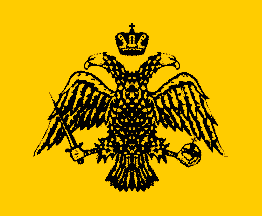
 |
|
|
|
|
#1 |
|
Member
Join Date: Dec 2004
Location: Istanbul
Posts: 452
|
hi. can anybody please identify this sword's nationality and age?
On the spine writes "peter mumm klingen fabriquant sohlingen". peter mumm is a blades firm which began operating in 1695? and continued in 18th c. as far as I can understand from the pages in Germen I was only able to find about on the web. Coat of arms on the blade looks like Russian to me,correct? Scabbard is thick solid steel covered on wood,making it nearly as heavy as the blade itself. regards |
|
|

|
|
|
#2 |
|
Arms Historian
Join Date: Dec 2004
Location: Route 66
Posts: 9,955
|
This appears to be one of the famed Prussian 'Blucher sabres' that if not mistaken were the German counterpart of the British M1796 light cavalry sabres. While I do not have my resources handy, there was a book written on these by Gerhard Seifert. I believe best source of data would be "Cut and Thrust Weapons" (Wagner) and others with significant material on European regulation swords. The Solingen swordmaking families carried on for many generations, and the names as well as marks used by the early makers carried on as trademarks and symbols of quality there well into later centuries.
I am not certain, but am inclined to agree on the double head eagle being Russian, although it seems that it was used in the Austro-Hungarian Empire as well (can anyone please elaborate on that?  Looks like a sound example, and the elongated rectangular langets are characteristically German, and the sabre would likely be from about c.1811. Very nice Napoleonic period piece! If this piece is in fact carrying a Russian cypher, even more fantastic! Best regards, Jim |
|
|

|
|
|
#3 |
|
Member
Join Date: Mar 2006
Location: Room 101, Glos. UK
Posts: 4,184
|
austro-hungarian impirial eagle:
 Rusiian imperial eagle  very similar, except for the breast shield, sadly lacking on the sword.... |
|
|

|
|
|
#4 |
|
Member
Join Date: Jan 2006
Location: Kent
Posts: 2,653
|
The Russian perhaps looks more likely ...the Austro Hungarian eagle is carrying a mace and sword in the right talon, the Russian only one object... like the engraving on the sword. But I do not know how accurately the coat of arms would be copied

|
|
|

|
|
|
#5 |
|
Member
Join Date: Mar 2006
Location: Room 101, Glos. UK
Posts: 4,184
|
just to put another fly in the ointment, here's the imperial byzantine flag:
 i note the russian and austrian ones always show both eagles wearing crowns as well as the large one above them all, but the byzantine one, and the sword's one do not....also no breast shield on the sword or the eastern roman flag. the sword is a bit new to be byzantine tho..... a quick troll around for bicephalous eagles also shows that the holy roman empire used it with either nothing in the claws, a sword in the right, orb in the left, or a sceptre in the right, or even a sword in both claws.....the eagles heads normally uncrowned, but occasionally with a background ring of some sort, like the sword. maybe one of the electors (who were mostly german) issued similar swords and one of his soldiers doodled a crude image on his blade whilst having nothing better to do (except hiding from his sergeant of course). the HRE never actually died out......it's still around  (the current emperor is Emperor Charles VIII) and it's college of heraldry is even on line.....http://www.imperialcollegeofheraldry.org/ (the current emperor is Emperor Charles VIII) and it's college of heraldry is even on line.....http://www.imperialcollegeofheraldry.org/bicephalous eagles were also used by many of the balkan states and even greece. albania has it on their flag, serbia and montenegro also have used this symbol, sometimes with the orb and sword or sceptre. the possibilities seem endless..... Last edited by kronckew; 30th June 2007 at 08:40 PM. |
|
|

|
|
|
#6 |
|
Member
Join Date: Dec 2004
Location: Ann Arbor, MI
Posts: 5,503
|
The engraving of the double-headed eagle on the sword is quite careless; likely it was done at the request of the owner and by a not very skilled smith.
I vote for Austro- Hungarian. The curliqued filling of the body somehow does not look Russian to me. Strangely, it reminds me of Greek or Balkan blade engravings ( I am having a cold, and a mix of fever and over-the-counter concoctions may explain my hallucinations    ) )
|
|
|

|
 |
|
|